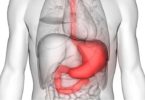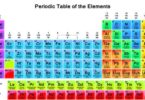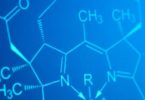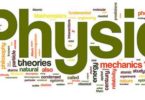Bone Tissue and Skeletal System Quiz:
Haversian canals are found in
(a) Internal ear of mammal
(b) External ear of mammal
(c) Long bone of a rabbit
(d) Spinal cord
Hyaline cartilage forms
(a) Tracheal rings
(b) Pubic symphysis
(c) Epiglottis
(d) External ear
What is the process by which bone is broken down and reabsorbed by the body?
(a) Calcification
(b) Ossification
(c) Resorption
(d) Remodeling
Osteon is found in the
(a) Femur of frog
(b) Femur of bird
(c) Femur of rabbit
(d) Femur of man and rabbit
A femur is kept in dilute HCl for three days, and it becomes
(a) Brittle
(b) Soft and elastic
(c) Remains as it is
(d) Harder
Tendon connects _
(a) Cartilage with muscles
(b) Ligament with muscles
(c) Bone with bone
(d) Bone with muscles
Related: Hybridisation chemistry quiz
Bone-forming cells are known as
(a) Chondroclasts
(b) Osteoblasts
(c) Chondroblasts
(d) Osteoclasts
The long shaft of a bone is called as
(a) Epiphysis
(b) Diaphysis
(c) Metaphysis
The connective tissue of the vertebrate body is built up from fibers of the protein collagen, embedded in a polysaccharide matrix to form:
(a) Cartilage
(b) Blood vessel
(c) Heart
(d) Lung
The smallest bone in mammals is
(a) septomaxiilary
(b) dentary
(c) femur
(d) stapes
Inorganic phosphate found in the bones is called
(a) Hydroxyapatite
(b) Ossein
Related: Enzyme quiz
The Patella bone is an example of
(a) Cartilagenous bone
(b) Dermal bone
(c) Spongy bone
(d) Sesamoid bone
The percentage of inorganic and organic salts in the matrix of a bone is
(a) 40% inorganic, 60% organic
(b) 62% inorganic, 38% organic
(c) 80% inorganic, 20% organic
(d) 85% inorganic, 15% organic
During locomotion in man, movement occurs between which set
(a) Humerus and ulna
(b) Femur and pelvic girdle
(c) Skull and atlas
(d) Humerus and pectoral girdle
Teeth are chiefly made up of
(a) Enamel
(b) Dentine
(c) Pulp
(d) Odontoblasts
Related: Amino acids quiz
Red marrows of the bone produce
(a) Lymphocytes
(b) Eosinophils
(c) Plasma
(d) RBC
All the cartilaginous bones were previously
(a) Elastic cartilage
(b) Hyaline cartilage
(c) Calcified cartilage
(d) Fibrous cartilage
The haversian system is found in the
(a) Pigeon
(b) Panther
(c) Pipe fish
(d) Python
The haversian system is a diagnostic feature of
(a) Avian bones
(b) All animals
(c) Mammalian bones only
(d) Reptilian bones
Related: Digestive system questions
Red marrow is found in
(a) Amphibians
(b) Reptiles
(c) Mammals
Which of the following tissues is more elastic
(a) Bone
(b) Cartilage
(c) Both are equally elastic
(d) Both are not elastic
Covering around the bone is called
(a) Perichondrion
(b) Periosteum
(c) Epiosteum
(d) Endosteum
During an injury, the nasal septum gets damaged, and for its recovery, cartilage is predfused
(a) Hyaline cartilage
(b) Elastic cartilage
(c) Calcified cartilage
(d) Fibro cartilage
Related: Kinematics questions
In mammals, Haversian canals are connected by transverse canals, which are called:
(a) Semicircular canals
(b) Volkman’s canals
(c) Inguinal canals
(d) Bidder’s canals
The crown of the tooth is covered by
(a) Cartilage
(b) Dentine
(c) Enamel
(d) Chitin
The role of bone marrow in mammals is
(a) To assist kidneys
(b) To act as hemopoietic tissue
(c) To assist liver
(d) To control blood pressure
The major constituent of bone is
(a) Calcium phosphate
(b) Magnesium phosphate
(c) Calcium carbonate
(d) Sodium chloride
Related: F block elements
Haversian canals are found in
(a) Bone marrow
(b) Hyaline cartilage
(c) Bone matrix
(d) Calcified cartilage
A sprain is caused by the stretching of
(a) Muscle
(b) Ligament
(c) Tendon
(d) Nerve
The external ear (pinna) contains a hard, flexible structure composed of
(a) Bone
(b) Cartilage
(c) Tendon
(d) Ligament
In rabbits, the ends of long bone is connected to one another by
(a) Tendon
(b) Ligament
(c) Muscle
(d) Cartilage
Related: Immune System quiz
Which of the following cartilage is present on the end of long bones?
(a) Elastic cartilage
(b) Fibrous cartilage
(c) Calcified cartilage
(d) Hyaline cartilage
The fibrous tissue that connects the two bones is
(a) Connective tissue
(b) Tendon
(c) Ligament
(d) Adipose tissue
Humorous and muscles are connected with
(a) Ligament
(b) Tendons
The membrane that covers cartilage is known as
(a) Periosteum
(b) Perichondrium
(c) Perineurium
(d) Pericardium
Related: Glycolysis quiz
Choose the correct
(a) Haversian canals are transverse canals
(b) Volkmann’s canals are longitudinal canals
(c) Haversian canals are longitudinal, whereas Volkmann’s canals are transverse canals
The cells that arise in red bone marrow migrate to the epidermis and participate in the immune response are
(a) Merkel cells
(b) Melanocytes
(c) Langerhans cells
(d) Keratinocytes
Which bone in mammals is not used for protection and support in the body?
(a) Stapes
(b) Atlas vertebra
(c) Ribs
(d) Scapula
The Bony Labyrinth of the Human ear formed by the temporal bone is filled with
(a) Perilymph
(b) Haemolymph
(c) Endolymph
(d) Elastic ligament
In humans, the ear ossicles are the chain of
(a) Three bones, Incus, Malleus & Stapes
(b) Two bones, Tympanic and Periotic
(c) Three bones stapes, Malleus, Incus & Stapes
(d) Three bones, Malleus, Incus & Stapes
Related: Respiratory system multiple choice questions and answers
Most skull bones are joined by which type of joint
(a) Hinge Joint
(b) Sutures
(c) Perfect Joint
(d) Gliding Joint
Which type of lever do the ball of the foot, the tarsal bones, and the calf muscles form?
(a) First class lever
(b) Second class lever
(c) Third class lever






